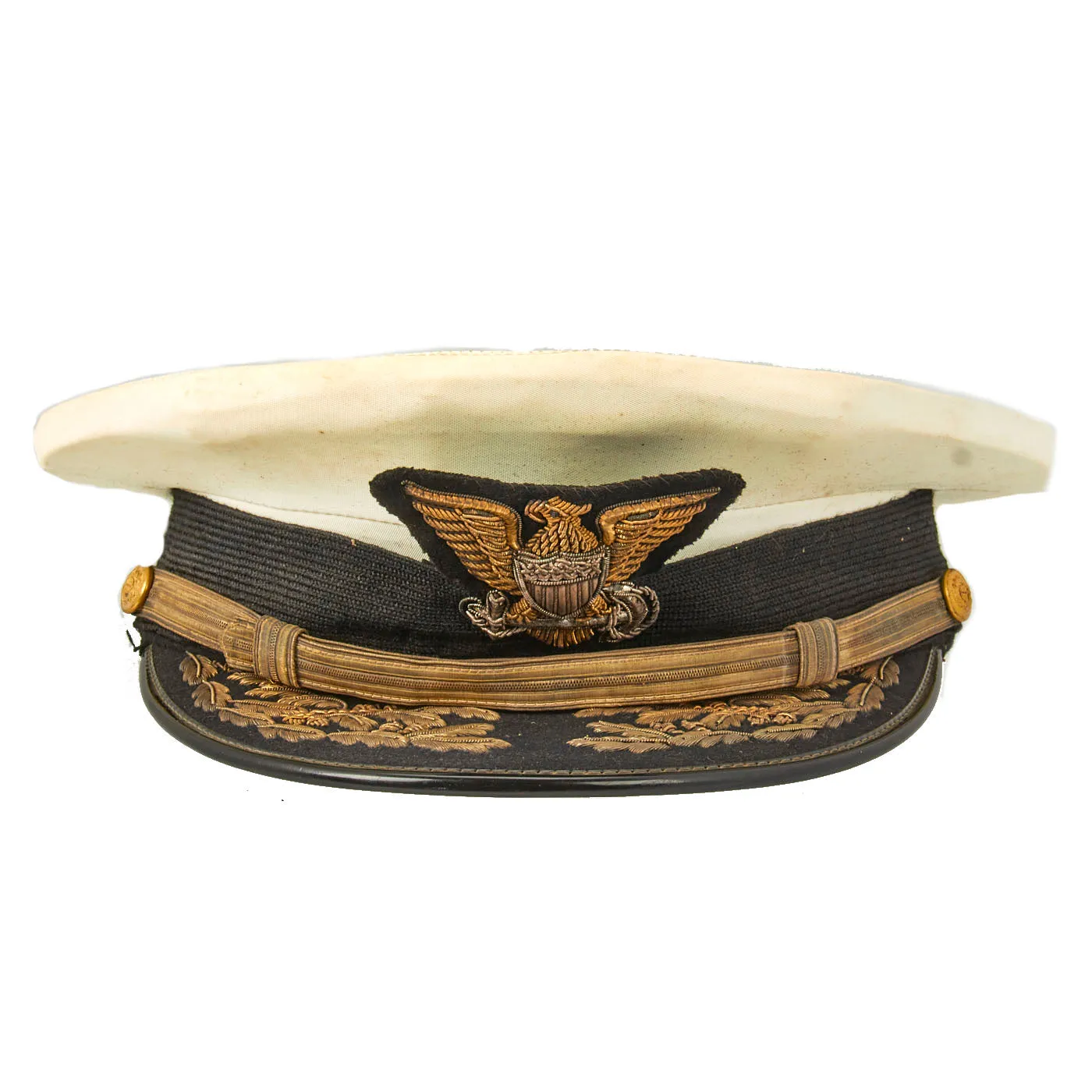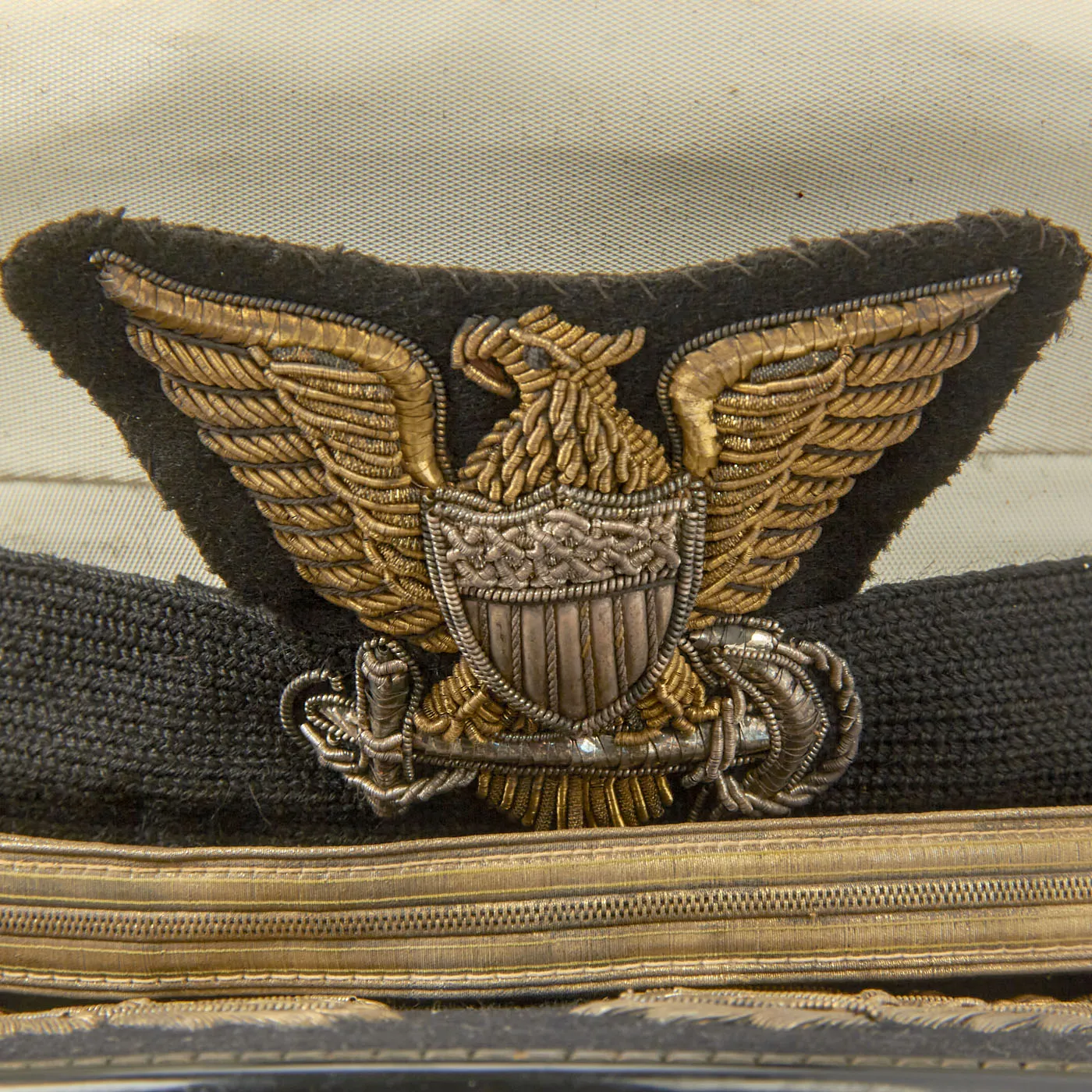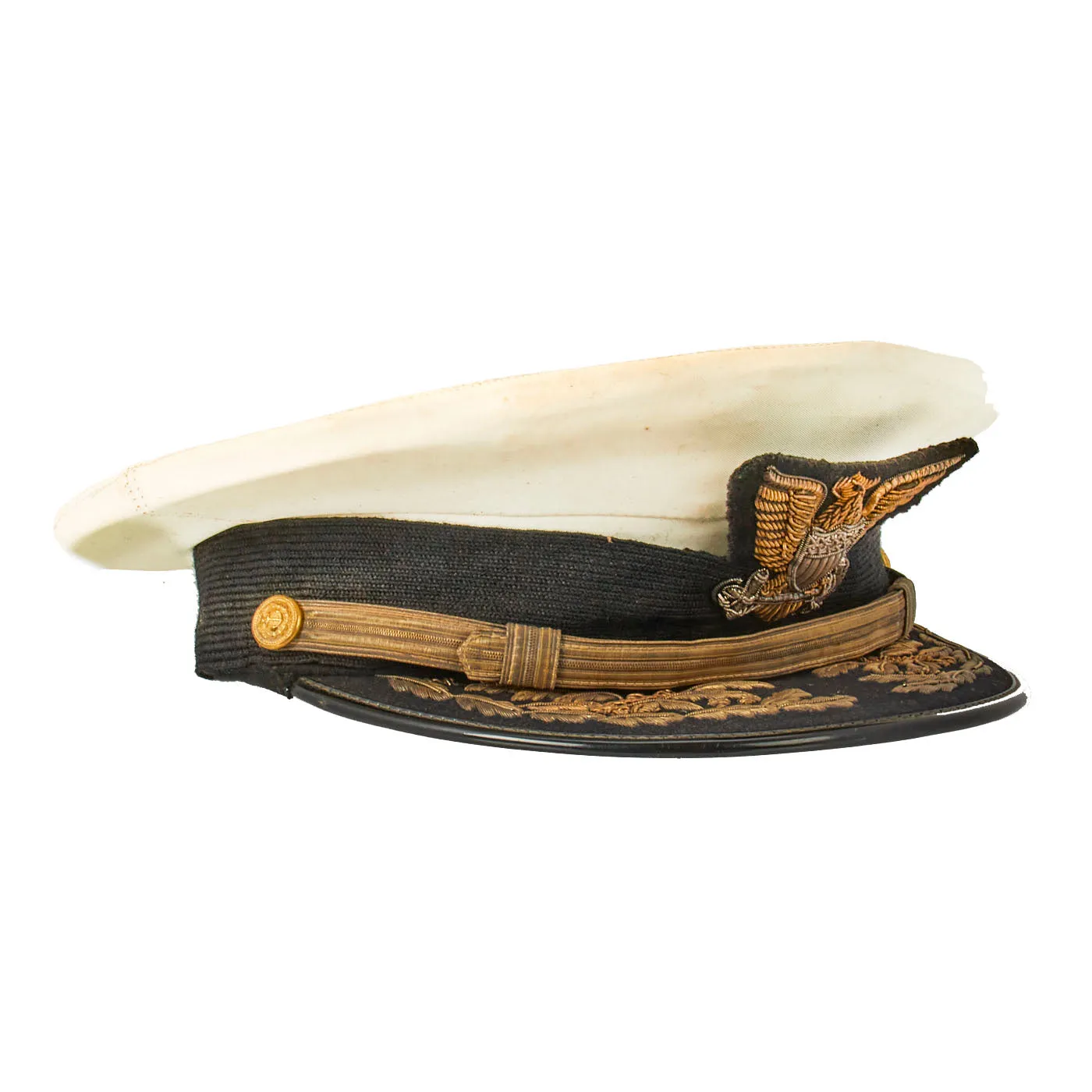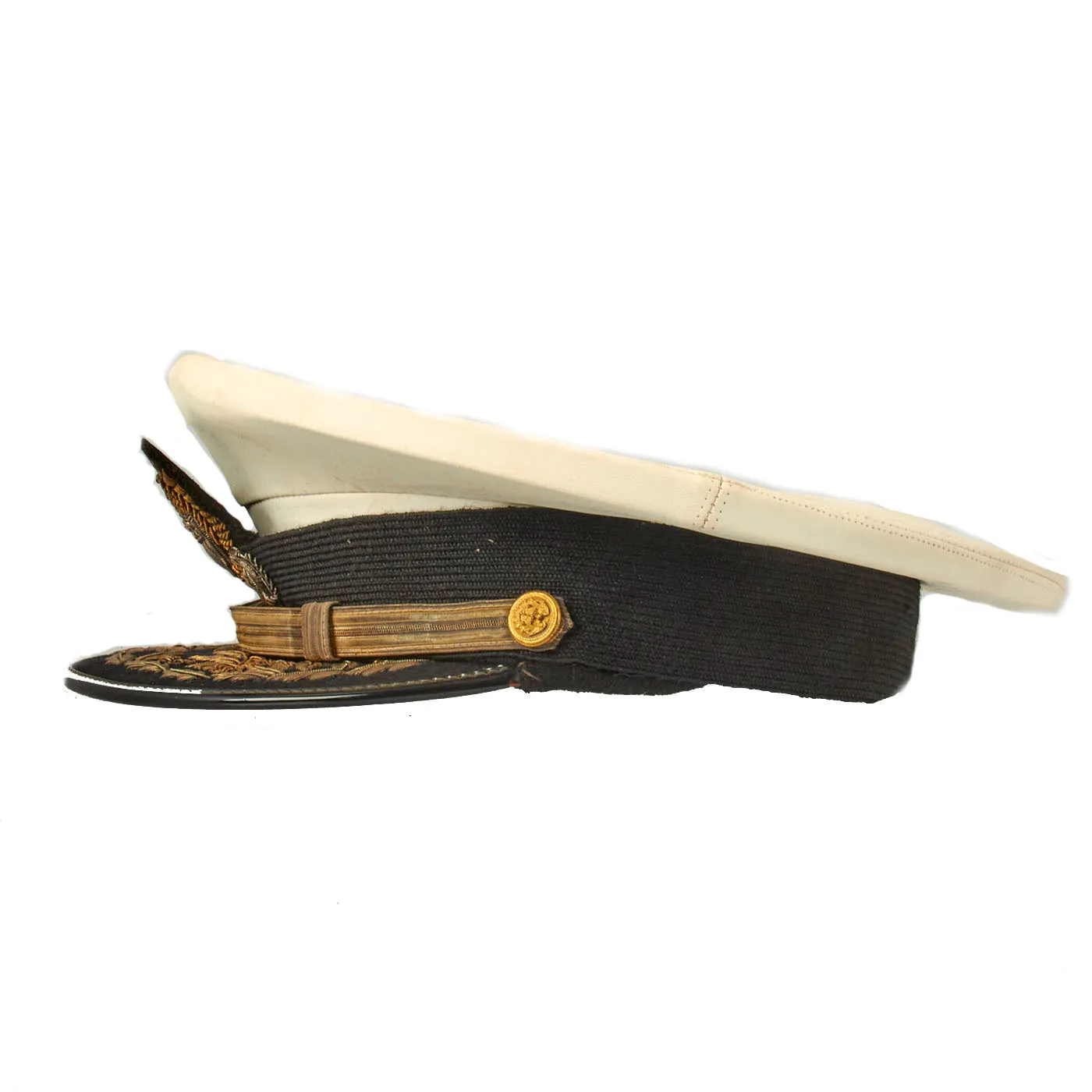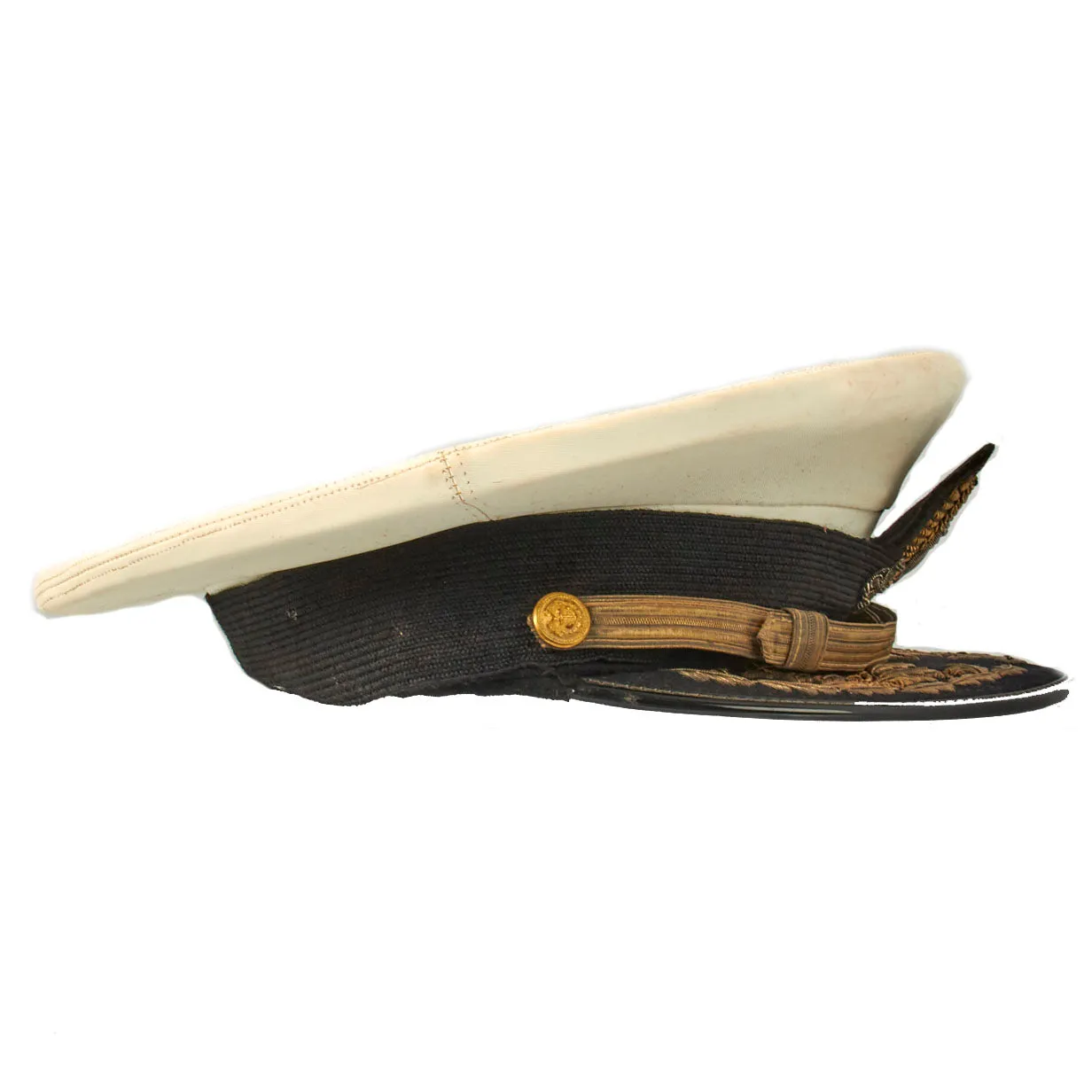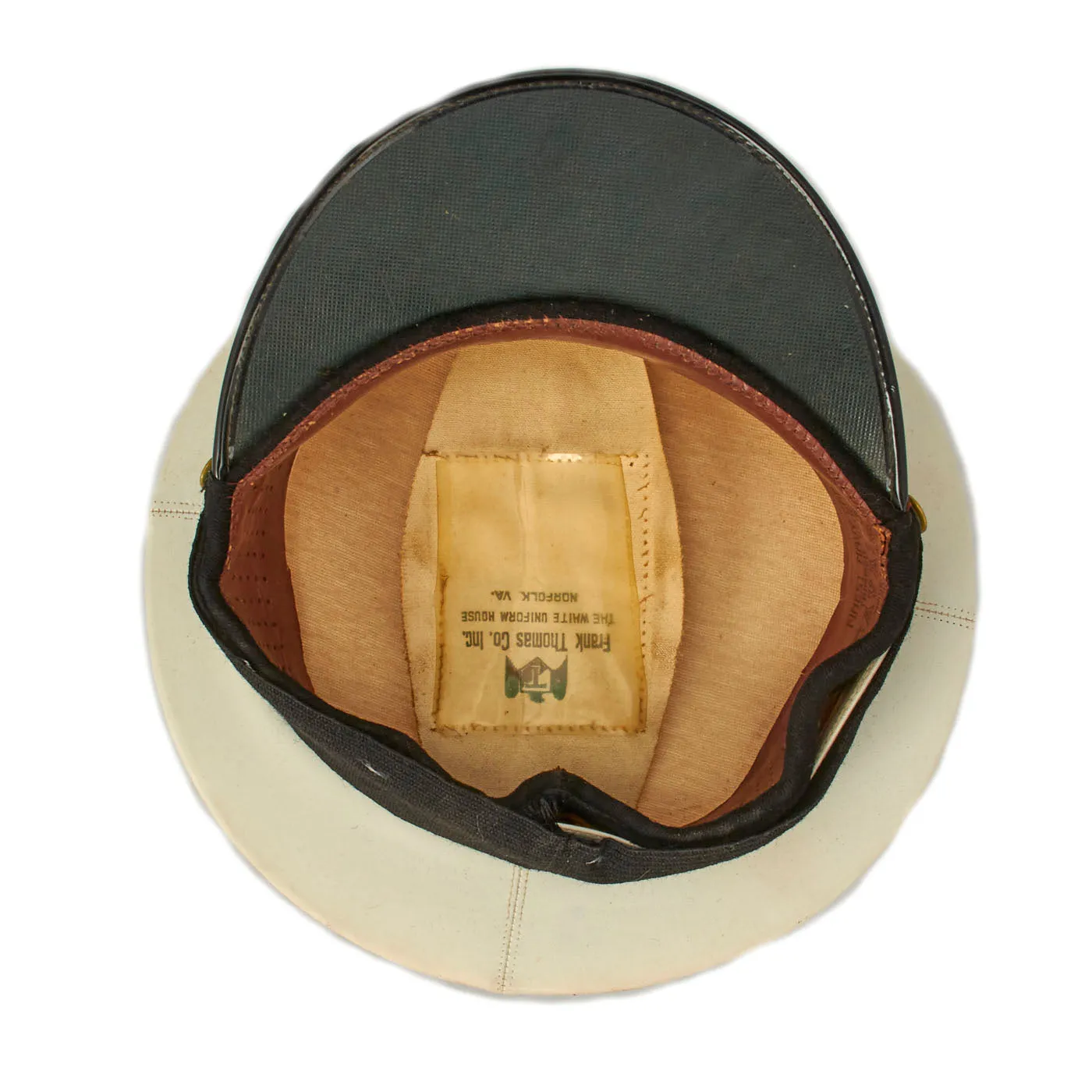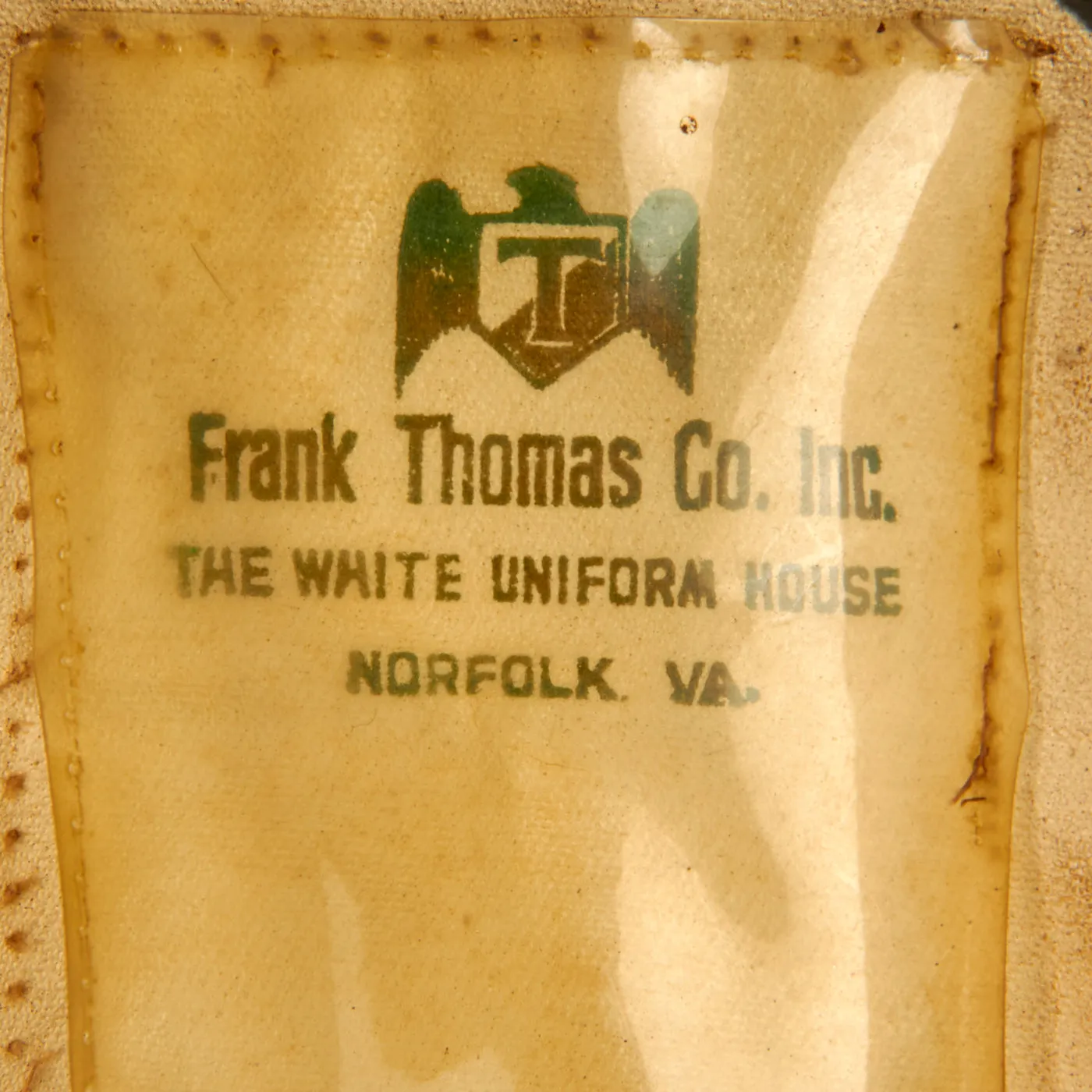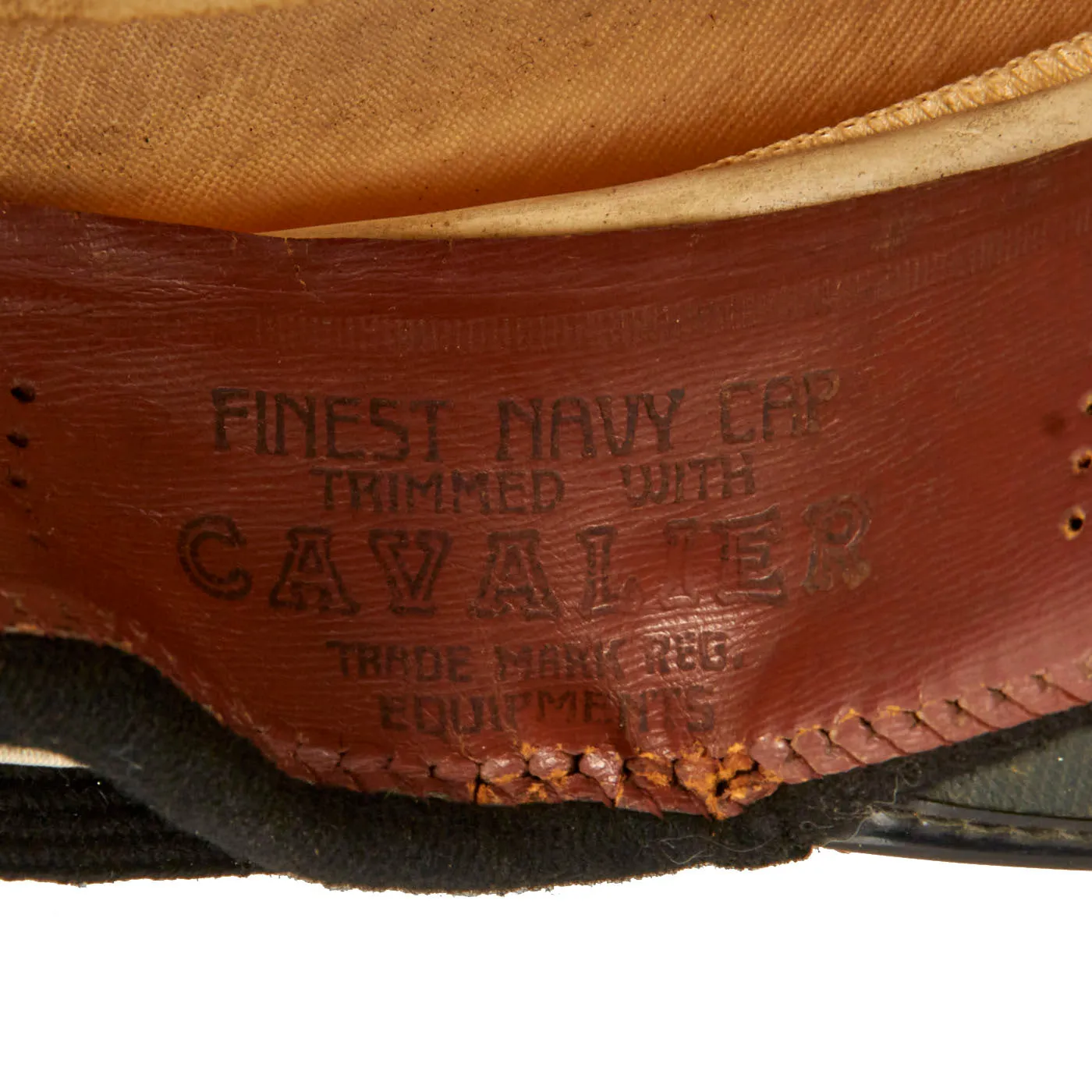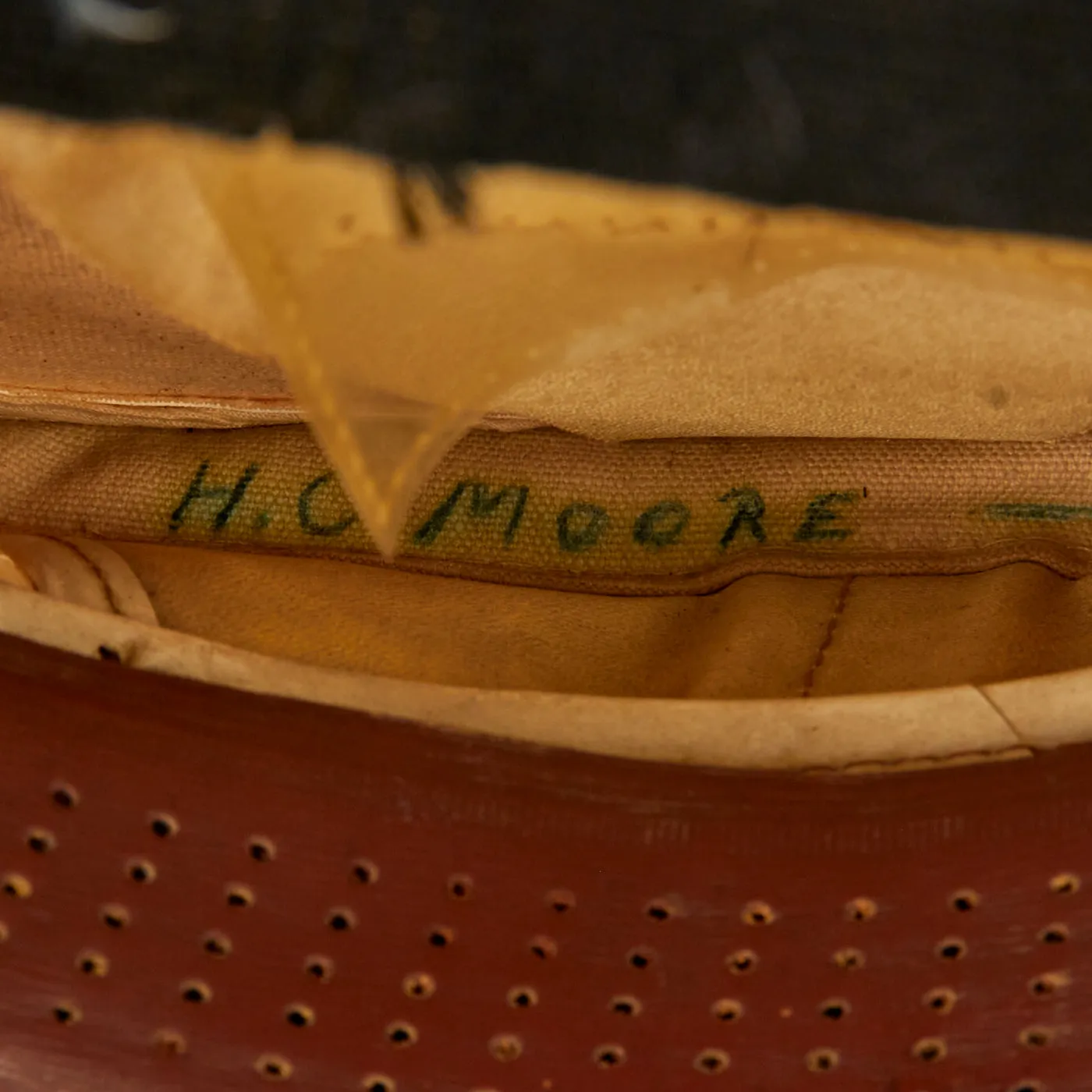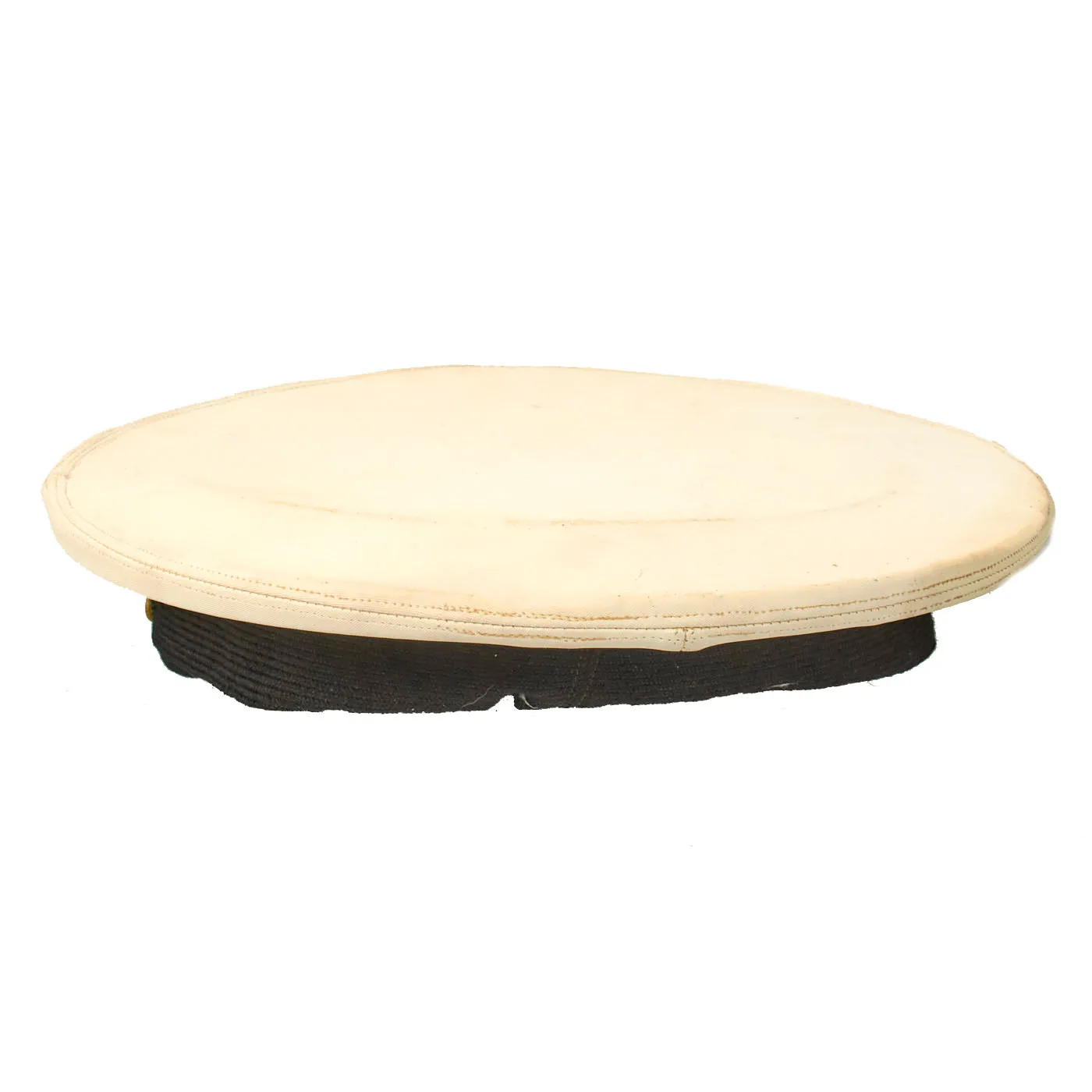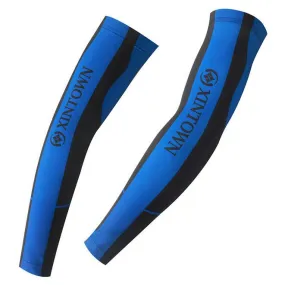Original Item: Only One Available. This is a beautiful example of a WWII era white US Coast Guard Officer’s Visor with a beautiful bullion eagle insignia. The hat is named to H.C. Moore and is written on the inside by the rim stiffener.
The visor is in lovely condition with signs of moderate wear and staining. All markings are still vivid and easily recognizable on both the leather sweatband and the top manufacturer’s label.
The sweatband is marked:
FINEST NAVY CAP
TRIMMED WITH
CAVALIER
TRADE MARK REG.
EQUIPMENTS
The top is marked:
Frank Thomas Co. Inc.
THE WHITE UNIFORM HOUSE
NORFOLK VA.
Unfortunately we have not been able to fully research H.C. Moore, but we were able to find the ship he commanded!
USCGC Argo: USCGC Argo (WPC-100) was a Thetis-class patrol boat belonging to the United States Coast Guard launched on 12 November 1932 and commissioned on 6 January 1933.
Argo was built by John H. Mathis Company in Camden, New Jersey in 1932 and entered service on 6 January 1933 under the command of Lieutenant H. C. Moore, USCG. Her initial homeport was Stapleton, New York until 13 March 1934 when she was transferred to Newport, Rhode Island. She remained in Newport until early 1942. During this time she served on United States Coast Guard Academy cadet training cruises in the Atlantic.
Early in 1942 Argo was attached to the Atlantic Fleet as a convoy escort. While on escort duty on 22 June 1942, Argo made a depth charge attack in which the charges failed to explode. On the 27th of the same month, she made another contact at 10:45 but ended the search fifteen minutes later. Two minutes later a ship in the convoy was torpedoed and at 01:49 Argo found a contact at 1,500 yards (1,400 m) with the target moving slowly to the right. The cutter closed to 650 yards (590 m) but lost contact at 150 yards (140 m) and released a five-charge pattern and sighted a large oil bubble upon completion of the attack. Investigating the location where the charges were released, her crew observed a large area of bubbles and an oil slick leading to the horizon, presumably in the vicinity but beyond where the attack was made. At 02:10 she released a pattern of three charges and oil was still coming to the surface. She then released one charge at a depth of over 300 feet (91 m) (rather than the other set for 200 ft, 61 m). Presuming the submarine was destroyed, she changed course to rejoin the convoy.
While Argo was in convoy on 6 January 1944, under the command of LTJG Eliot Winslow, the merchant tanker Camas Meadows and the Navy gunboat USS St. Augustine collided. St. Augustine sank quickly and Argo rescued 23 survivors and picked up six bodies. Crewmembers from Argo and her sister ship Thetis were recognized for their actions following the collision.
Sometime after 24 March 1944 Argo was placed in reduced commission at the Chelsea Navy Base near Boston, Massachusetts.
On 11 May 1945, three days after the surrender of Germany, while patrolling off the east coast, Argo participated in the surrender of three German submarines: U-805, U-234 and U-873. The cutter took aboard a number of prisoners and escorted the German submarines to Portsmouth Navy Yard in Portsmouth, New Hampshire without incident.
Later in 1945, Argo was assigned to the First Coast Guard District and was assigned to rescue duty. Her new homeport was Rockland, Maine. In 1947 the commander of First Coast Guard District requested to place Argo in "out of commission, in reserve" status due to manpower shortages. The request was not initially approved. The establishment of the Weather Patrol Program strained Coast Guard manpower and the Argo was placed in reserve status. The buoy tender USCGC Spar towed the vessel to Cape May, New Jersey where she was laid up.
Argo was decommissioned on October 30, 1948 and sold on 2 November 1955 to A.T. Davies, Birchfield Boiler, Inc. of Tacoma, Washington for $15,564. She was eventually acquired by Circle Line Sightseeing Cruises of New York City and greatly modified for passenger service. She was re-engined with eight General Motors 6-71 Quad diesel engines (four per shaft) and Falk reverse/reduction gears with individual hydraulically operated clutches for each engine. As of early 2017, she was serving in New York Harbor as Sightseer XII.




